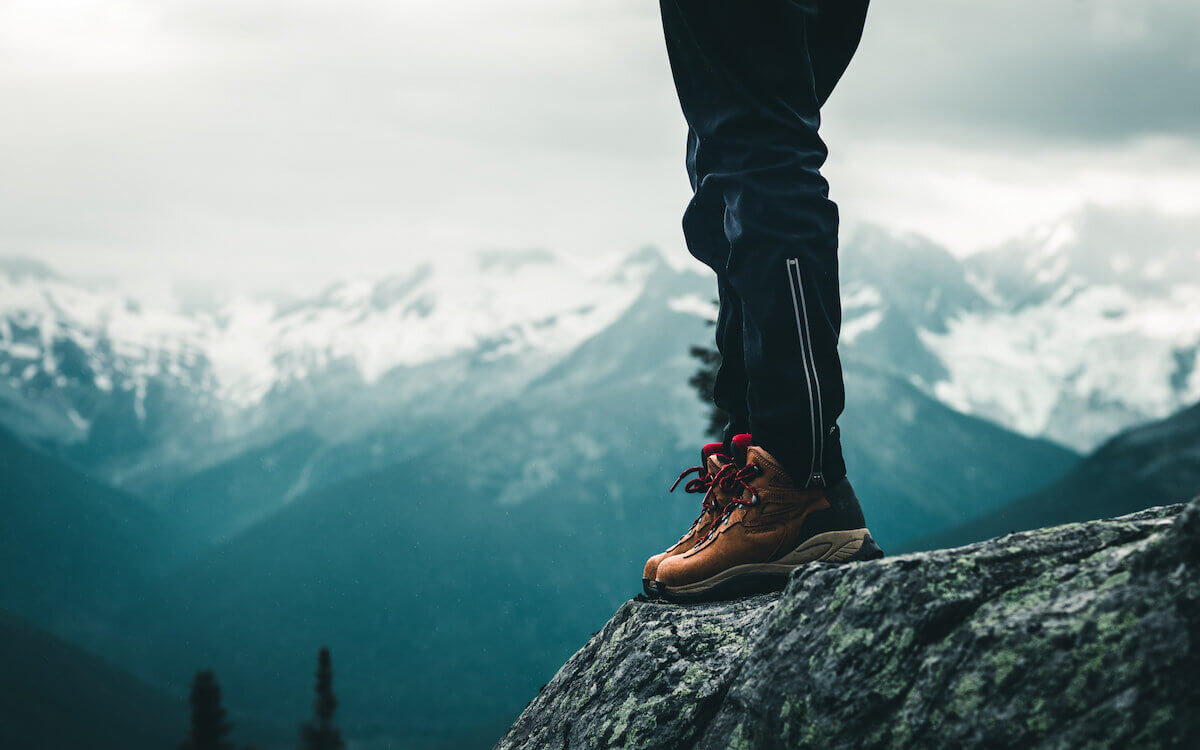The Ultimate Guide to Trekking Shoes for Men: How to Choose the Perfect Pair for Your Adventures
September 26 2023 – Nysh Website

From tranquil moments of self-reflection to refreshing sights of landscapes, trekking allows you to escape and discover new things and spaces. While challenging yourself to nature can be overwhelming, the experience is replete with delightful surprises. Trekking involves long walks over diverse terrain, each uniquely demanding its specific shoe style.
If you are an ardent nature lover planning to embark on an adventure of a lifetime, here is a quick guide to choosing the perfect pair of shoes for your next adventure.
7 Key Elements to Look for When Buying the Perfect Pair of Trekking Shoes
Trekking shoes are one of the essential requirements when it comes to trekking. They protect your feet against bruising and abrasion from snowy, rocky and wilderness terrains. Shoes designed for trekking significantly differ from your normal running or sports shoes. Here are seven key elements that make good trekking Shoes for men.
Strong grip: Trekking boots for men should have thick lugs to bite into the soil and rubber that grips well on various surfaces. You can check the grooves of the hiking shoes to assess their grip. The best hiking boots will have deep grooves and a good grip over mud, slush, dirt, etc. Check the lug pattern at the bottom; it should ease walking, providing no foot traction.
Sufficient cushioning: Treks are usually meant for a long duration, an average of 3-4 days. Hence, trekking boots must offer the utmost comfort, softness and flexibility when you walk those rocky trails. With stable sole, insulated and waterproof material, the right fit enables trekkers to withstand warm, dry, and harsh conditions.
Slip resistance lug-designed bottom and breathability are the features that make the pair of shoes perfect for both experts and beginners. To examine the cushioning abilities of the hiking shoes, use a hard, metallic object and tap it against the shoe sole. If the tapping makes a dull sound, the sole is soft and right for your trek. However, if you hear a hard or sharp sound, it means the sole is too hard and is not suitable for trekking.
Stable and sturdy: You can check a trekking shoe's stability by squeezing its rear part (the sides of the heel counter). Stable hiking shoes are compression-resistant. They also resist twisting, whereas flexible shoes quickly twist. In general, the greater the surface area of the shoe in touch with the ground, the more support the shoe provides the foot.
Excellent ankle and feet support: A trekking shoe should offer maximum ankle and foot support. The right shoe for your trek is one that fully covers your ankles and heel, giving your feet good support and grip. Trekking footwear with mid-cut (rising just above the ankle) or high-cut will protect from cuts and abrasions. Additionally, these boots offer the best ankle support and can protect your ankle from twisting when you climb the hilly trails.
Choose the right fit: Check if the shoes fit you well. Ideally, the trekking boots should fit the feet snugly. Some trekkers suggest buying hiking boots one size larger than your ordinary shoes. The extra space allows your feet to breathe when you are constantly moving while preventing shoe bites. Moreover, you have extra room for wearing socks, especially winter socks, when you go for those chilly winter treks.
Breathability: Checking breathability is extremely important while buying hiking shoes. Breathable shoes are the most high-performance option for trekking. They can avoid difficulties arising out of wet, swampy terrains. If the feet remain wet due to sweat, it can cause trench foot, blisters, and even cold feet.
Water Resistance: Waterproof trekking boots will keep your feet dry and comfortable, whether drizzling or downright pouring. If your shoe lacks water resistance, chances are that you will develop shoe bites, blisters and even frost-bite when trekking on snowy trails owing to wet feet. Furthermore, if the shoes have an added layer of leather or resin, it can be advantageous. It ensures that your shoe prevents water from seeping in when you step into wet patches for a few seconds.
Trekkers' feet need more effort and extensive preparation when they begin on trips over untamed and unmarked terrain. Trekking footwear provides better foot and ankle protection on rough, rocky trails. They tend to have a stiffer insole and higher uppers that help to keep your feet dry in mud, rain, or slush. Pick hiking shoes with excellent grip to navigate uneven terrains with ease. Choose shoes with exceptional insulation to protect your feet from extreme cold conditions.
Buy the Best Trekking Boots for Your Trek
Choosing the right pair of trekking boots for your trek is pivotal in ensuring your feet remain warm and comfortable throughout the journey. Discover a wide range of high-quality trekking shoes for men specifically designed to suit the unique needs of those with an adventurous soul. The lightweight shoes provide superior comfort and traction even in agile terrains. These shoes are crafted to fit snugly and comfortably.
Beat the Cold in a Sustainable Way
Winter treks are beautiful and awe-inspiring. However, at the same time, they can pose challenges like battling cold weather. Hence, it is essential to stay warm and avoid any winter hazards. WARMEE Foot Warmers from Nysh can help you enjoy your winter trek to the fullest. WARMEE by Nysh offers a unique and innovative range of body, hand and foot warmers.
Built using air-activated technology, they are ready to use anywhere and everywhere. Simply remove the wrapper, slip foot warmers into men’s trekking shoes, and make it work. It can keep you warm, cosy and comfortable for almost 5 hours. The WARMEE foot warmers also do not require a battery or hot water. They generate heat, unlike sweaters, thermals and jackets that only offer an excellent shield against outside wind and cold.
No matter what the season, trekking can be a challenge. But if you prepare for it correctly and have all the right gear, your experience will be much smoother and more comfortable. Browse through an extensive range of functional and fashionable warmers. Happy trekking!
FAQs
How to find the perfect fit for a foot warmer?
Warmer should be a slim fit. It should sit close to your body. The closer it is to the body, the more effectively it can trap your body’s heat.
Is it necessary to wear anything under the body warmer?
No, body warmers do not require anything to be worn underneath. However, you can choose to add as many layers over the body warmer.
What are the suitable climatic conditions for wearing foot warmers?
For places with pleasant winters, body warmer can be worn alone or with socks. However, one should consider wearing a few additional layers and leg warmers for places with extremely cold conditions.
Do body warmers require to be washed daily?
It is a good practice to wash your body warmer before use. However, warmers are not required to be washed every day. They can be worn for up to three days, without washing, except if it has little sweat and dirt.
Do foot warmers help in blood circulation?
The heat generated by foot warmers helps in dilating blood vessels and, thus, helps in increased blood flow through vessels.


4 comments
Check out our guide on https://www.stepinadventure.com/blogs/news/hiking-trekking-shoes-for-men-women trekking shoes for more tips.
Thanks for this informative article — especially the points on sole stiffness and breathability. One extra tip I like to share: try shoes with the same socks you’ll wear on the trail and walk a few hundred meters on an incline to check toe-room and heel slip. For a full buying guide and model suggestions for men and women, see our post: trekking shoes for men & women in india 2025
Thanks for this informative article — especially the points on sole stiffness and breathability. One extra tip I like to share: try shoes with the same socks you’ll wear on the trail and walk a few hundred meters on an incline to check toe-room and heel slip. For a full buying guide and model suggestions for men and women, see our post: trekking shoes for men & women in india 2025
Thanks for this informative article — especially the points on sole stiffness and breathability. One extra tip I like to share: try shoes with the same socks you’ll wear on the trail and walk a few hundred meters on an incline to check toe-room and heel slip. For a full buying guide and model suggestions for men and women, see our post: trekking shoes for men & women in india 2025